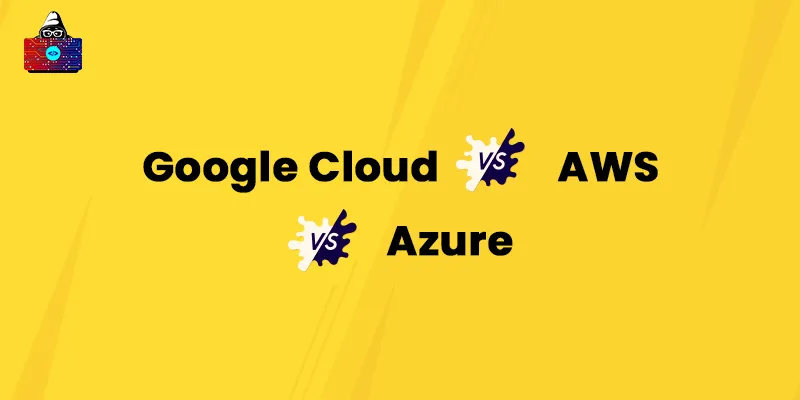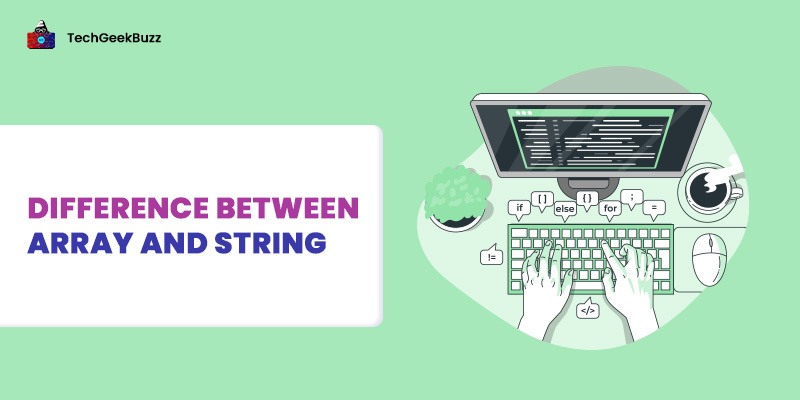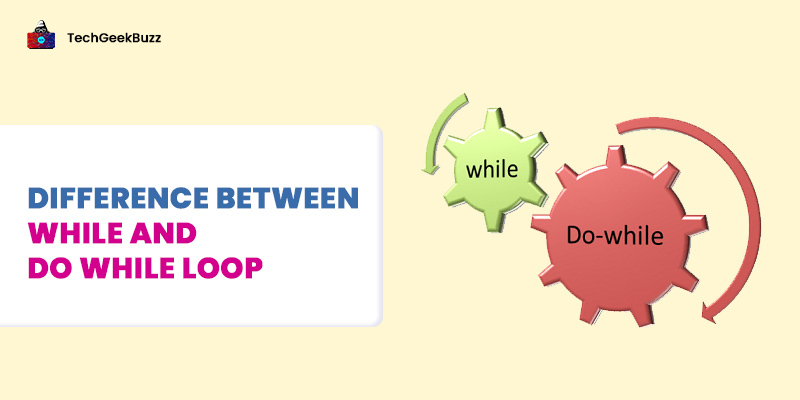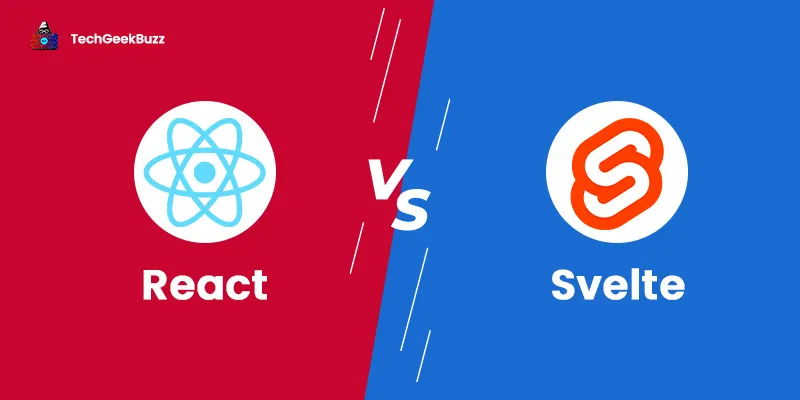Cloud computing platforms have gained a lot of popularity across all industries. They have revolutionized the way businesses function and smoothened their business activities. The cloud market has witnessed the rise of several cloud computing platforms, and the three leading platforms among all are Amazon Web Services (AWS), Google Cloud Platform, and Microsoft Azure.
This article will emphasize the key differences between Google Cloud Platform, AWS, and Microsoft Azure cloud platforms. Before we proceed to differences, we shall discuss each of these three platforms individually.
So, without further ado, let us begin.
What is Google Cloud Platform?
A Google Cloud Platform (GCP) is a collection of cloud services offered by Google, like computing, data analytics, data storage, and machine learning. These services run on the same infrastructure that Google uses for its end-user products, like YouTube, Google Search, Gmail, and Google Drive. It offers three different computing environments, namely, Infrastructure-as-a-Service (IaaS), Platform-as-a-Service (PaaS), and serverless.
In 2008, Google announced its first cloud computing service called App Engine, allowing users to host and develop web applications in Google-managed data centers. But it became available in 2011. Later, Google continued adding various services to the cloud platform. Google Cloud Platform (GCP) is a segment of Google Cloud. Some other services in Google Cloud are:
- Google Workspace
- Enterprise version of Android and Chrome OS
- Application Programming Interfaces (APIs) for machine learning and enterprise mapping services.
What is AWS?
Amazon Web Services (AWS) is one of the most comprehensive and oldest cloud platforms. It is a subsidiary of Amazon, offering more than 200 on-demand cloud computing services to individuals, all sizes of companies, and government agencies, on a pay-as-you-go basis. Millions of customers spread across more than 190 countries, and some reputed companies, like Twitter, Netflix, Adobe, ESP, Facebook, etc., use AWS services.
This cloud platform is a combination of Platform-as-a-Service (PaaS), Infrastructure-as-a-Service (IaaS), and packaged Software-as-a-Service (SaaS). AWS entered the cloud market in 2002 with its unused Infrastructure-as-a-Service (IaaS). Later in 2004, Amazon launched Simple Queue Service (SQS), and in 2006, it relaunched AWS with two more services, namely EC2 and S3.
The year 2009 witnessed the release of VPC. In the following year, Amazon added Route 53 and SNS to the AWS platform. Later in 2011, it released Elastic Beanstalk. Furthermore, it introduced several certification programs for cloud aspirants to develop cloud computing skills. The year 2014 witnessed the release of Amazon Network Partner (APN). In the following years, it experienced a great profit. It is a fully-featured platform offering more than 200 cloud services.
What is Azure?
Azure or Microsoft Azure is a public cloud computing platform operated by Microsoft. Formerly, it was referred to as Windows Azure. It offers a wide range of cloud services, like networking, storage, analytics, and computing. Like AWS, Microsoft also charges on a pay-as-you-go basis. It is a combination of four different forms of cloud computing, namely, Infrastructure-as-a-Service (IaaS), Platform-as-a-Service (PaaS), Software-as-a-Service (SaaS), and serverless. Azure was first launched in 2010, and in 2014, it got the name ‘Microsoft Azure’.
There are 42 Azure data centers worldwide. Microsoft Azure offers more than 200 cloud services. These services are broadly categorized into 18 different categories, like web services, media identity, IoT, DevOps, database, security, computing, storage, networking, artificial intelligence, machine learning, management tools, developer tools, etc.
Google Cloud vs AWS vs Azure: A Head-to-Head Comparison
Following are the significant differences between AWS, Google Cloud Platform, and Microsoft Azure platforms:
| Parameters | Google Cloud | AWS | Azure |
| Establishment | Google Cloud entered the cloud market in 2011. | AWS was officially launched in 2006. | Azure was launched in 2010 and was renamed ‘Microsoft Azure’ in 2014. |
| Availability Zones | Google Cloud Platform is available in 20 regions worldwide. | AWS has 81 availability zones across the globe. | Azure is available in 54 regions across the world. |
| Market Shares and Growth Rate | GCP holds a cloud market share of 12%. | AWS solely holds 62% of the total cloud market share. | Microsoft Azure owns a 12% share in the cloud market. |
| Users | PayPal, Dominos, Bloomberg, 20th Century Fox are some major clients of Google Cloud Platform. | Some of the popular and high-profile customers of AWS are Netflix, Twitter, Samsung, Airbnb, BMW, etc. | The notable customers of Azure are Polycom, Apple, Johnson Controls, Honeywell, HP, etc. |
| Pricing | Azure’s basic instance of 2 virtual CPUs and 8GB of RAM charges $52 per month. The largest instance offering 3.75TB of RAM and 160 virtual CPUs charges $5.32 per hour. | A basic instance of AWS providing 2 virtual PCs and 8GB of RAM costs $69 per month. AWS’s largest instance of 3.84TB of RAM and 128 vCPUs costs $3.97 per hour. | Azure costs $70 per month for a basic instance of 2 vCPUs and 8GB of RAM. The largest instance of Azure offers 3.89TB of RAM and 128 virtual CPUs at $6.79 per hour. |
AWS vs Azure vs Google Cloud Platform Services
The table below highlights different AWS, Azure, and GCP services that come under the computing, database, storage, and networking categories.
| Services | Google Cloud Platform | AWS | Azure |
| Compute |
IaaS: Google Compute Engine. PaaS: Google App Engine. Serverless: Google Cloud Functions. Containers: Google Kubernetes Engine. |
IaaS: Amazon Elastic Compute Cloud. PaaS: AWS Elastic Beanstalk. Serverless Functions: AWS Lambda. Containers: Amazon Elastic Compute Cloud Service. |
IaaS: Virtual Machines.
PaaS: App Service and Cloud Services. Serverless Functions: Azure Functions. Containers: Azure Kubernetes (AKS). |
| Database |
RDBMS: Google Cloud SQL. NoSQL: Key-Value: Google Cloud DataStoreGoogle Cloud Bigtable. NoSQL: Indexed: Google Cloud Datastore. |
RDBMS: Amazon Relational Database Service. NoSQL: Key-Value: Amazon DynamoDB. NoSQL: Indexed: Amazon SimpleDB. |
RDBMS: SQL Database. NoSQL: Key-Value: Table Storage. NoSQL: Indexed: Azure Cosmos DB. |
| Storage |
Object Storage: Blob Storage. Virtual Server Disks: Managed Disks. Cold Storage: Azure Archive Blob Storage. File Storage: Azure File Storage. |
Object Storage: Amazon Simple Storage Service. Virtual Server Disks: Amazon Elastic Block Store. Cold Storage: Amazon Glacier. File Storage: Amazon Elastic File System. |
Object Storage: Google Cloud Storage . Virtual Server Disks: Google Compute Engine Persistent Disks. Cold Storage: Google Cloud Storage Nearline. File Storage: ZFS/Avere. |
| Networking |
Virtual Network: Virtual Private Cloud. Elastic Load Balancer: Google Cloud Load Balancing. Peering: Google Cloud Interconnect. DNS: Google Cloud DNS. |
Virtual Network: Amazon Virtual Private Cloud (VPC). Elastic Load Balancer: Elastic Load Balancer. Peering: Direct Connect. DNS: Amazon Route 53. |
Virtual Network: Virtual Networks (VNets). Elastic Load Balancer: Load Balancer. Peering: ExpressRoute. DNS: Azure DNS. |
Conclusion
Google Cloud Platform, Azure, and AWS are the leading cloud platforms. All of them are best in their own ways, and you can choose any of them as the cloud backbone for your business. In terms of services, market share, and availability zones, AWS is undoubtedly the winner. Google Cloud Platform stands out to be the best one in terms of pricing. When it comes to integration with open-source and on-premises systems, Azure is the winner.
Hopefully, this article covers all significant differences between AWS, Google Cloud Platform, and Azure. Choosing anyone over the other entirely depends on the users’ specific requirements.
People are also reading:





Leave a Comment on this Post